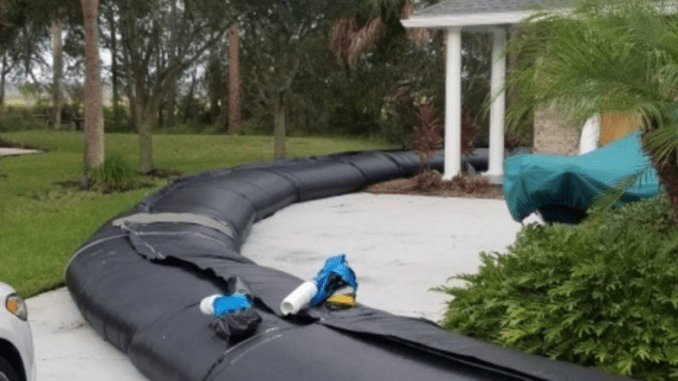
Virtually nothing remains impervious to the havoc that nature can unleash when it decides to strike. Among the myriad of catastrophic weather events causing millions of dollars in damages, floods, tornadoes, and perilous hurricanes top the list.
In the face of Mother Nature’s unpredictable temperament, our options often dwindle to either evacuating the affected area or diligently fortifying our properties. Randy Wagner, a resident of Texas, chose the latter path to shield his home during hurricane season. Investing around $8,300 in a 400-foot plastic barrier to fend off potential floodwaters, Randy’s decision was met with skepticism from friends and neighbors who deemed it an extravagant and impractical expense.

Contrary to popular belief, Randy’s prudent move proved instrumental in safeguarding his home from potential losses that could have amounted to a staggering $150,000 in repairs. It serves as a testament to the value of foresight and preparation in the face of natural disasters.
In light of such scenarios, it becomes imperative for individuals to familiarize themselves with safety measures during hurricane threats, mirroring Randy’s preparedness. Essential precautions include staying vigilant of surroundings, knowing evacuation routes, planning alternative accommodations, and assembling an emergency kit comprising essentials like a flashlight, batteries, cash, first aid items, and medications.

Evacuation orders should never be taken lightly, and if one opts to stay home, preparations for extended power outages and disruptions in essential services are crucial. Clearing potential hazards around the property, reinforcing doors and windows, and securing the roof are fundamental steps to minimize damage during hurricanes.
In anticipation of power outages, having a generator or portable power source proves beneficial. For those with the means, constructing storm shelters above flood levels provides added protection from severe winds. Communication plans with family and community members are vital during emergencies.
As the impending hurricane approaches, individuals are advised to close windows, secure storm shutters, and remain indoors. Setting refrigerators to the coldest setting can preserve food longer in case of power loss. Continuous monitoring of weather updates and emergency information is essential.

In the lead-up to a hurricane, various timelines dictate specific actions. When it’s 36 hours away, staying informed through media and ensuring preparedness is paramount. At the 18–36 hour mark, securing loose objects, checking windows, and having a working vehicle ready for immediate evacuation are crucial. As the hurricane approaches within six to eighteen hours, regular weather updates, charging devices, and finalizing evacuation plans are imperative.
Post-hurricane, cautious returns home are advised. Avoiding floodwaters and hazardous areas, checking in with family, and documenting property damage for insurance purposes are essential steps. It is a time for collective vigilance and support, acknowledging the impact on those who have suffered losses and appreciating the significance of prudence over regret.